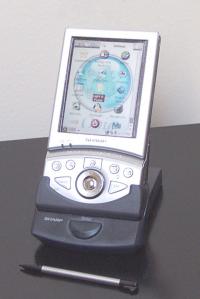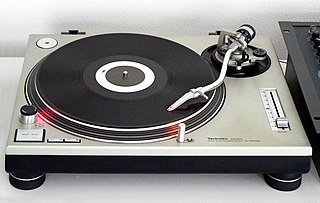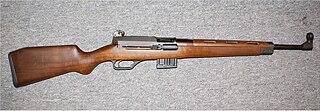| Variant models | SL, SL MK2 |
|---|---|
| Manufacturer | Moviecam |
| Introduced | 1996 (SL), 2004 (SL MK2) |
| Gauge | 35 mm |
| Weight | 3.5kg/7.8lbs without magazine |
| Movement | Compensating link movement with dual registration pins and dual pulldown claws, 4-perf (both model) or 3-perf (SL MK2 only) pulldown, interchangeable aperture plates; pitch adjustment. |
| Speed | Both models 2–50 frames per second (forward) and 12–32 frames per second (reverse – only for Compact magazines and with Moviespeed control box). Both models crystal accurate to 0.001 frame/s. |
| Aperture size | full range available |
| Aperture plate | removable |
| Motor | DC with quartz crystal control |
| Operating noise level | Both models about 25 dBA |
| Indicators | speed, run, counter (ft or m), shutter angle, time code (user bit and sensitivity level), voltage, incorrect movement, asynchronous speed, low battery, film end, heater, film jam, loose magazine |
| Lens mount | Arri PL (Super 35 compatible) |
| Shutter | electronic reflex mirror; Can adjusted between 22.5° and 180° while in standby; calibrated with stops at 45°, 90°, 120°, 144°, 172°, 180°. |
| Viewfinder | 6.1x magnification; viewfinder is rotatable 360° while maintaining an erect image; Also accept Compact viewfinders. |
| Video assist | Flicker-reduced color (SL MK2 only) or black-and-white CCD camera; on-board 1'' monitor available. |
| Ground glass | interchangeable |
| Magazines | 400' (120m) displacement style; built-in heaters and torque motors; electronic footage counters. 400' (120m) lightweight Steadicam magazines with vertical displacement. Also accept Compact 400' (120m) and 1000' (300m) magazines by using a magazine adaptor. |
| Magazine loading | active displacement mags; takes up emulsion in (9P design). |
| Film cores | standard cores |
| Batteries | 24V |
Moviecam SL (SL stands for SuperLight) is a movie camera product line created by Moviecam in 1996. It is a lighter version of Moviecam Compact. It can use most of the same accessories as Moviecam Compact but allows for even easier shooting from the shoulder or with a support like Steadicam systems.
In 2004, Moviecam released SL MK2[ citation needed ], with updated drive system, support of 3 perforations negative pulldown and new electronics.
The Vienna Development Method (VDM) is one of the longest-established formal methods for the development of computer-based systems. Originating in work done at the IBM Laboratory Vienna in the 1970s, it has grown to include a group of techniques and tools based on a formal specification language—the VDM Specification Language (VDM-SL). It has an extended form, VDM++, which supports the modeling of object-oriented and concurrent systems. Support for VDM includes commercial and academic tools for analyzing models, including support for testing and proving properties of models and generating program code from validated VDM models. There is a history of industrial usage of VDM and its tools and a growing body of research in the formalism has led to notable contributions to the engineering of critical systems, compilers, concurrent systems and in logic for computer science.

Leica Camera AG is a German company that manufactures cameras, optical lenses, photographic lenses, binoculars, rifle scopes and microscopes. The company was founded by Ernst Leitz in 1869, in Wetzlar, Germany.

The Combat Vehicle 90 is a family of Swedish tracked combat vehicles designed by Sweden's Defence Materiel Administration, Hägglunds and Bofors during the mid-1980s to early 1990s, entering service in Sweden in the mid-1990s. The CV90 platform design has continuously evolved in steps from Mk0 to current MkIV with advances in technology and in response to changing battlefield requirements. The Swedish version of the main infantry fighting vehicle (IFV) is fitted with a turret from Bofors that is equipped with a 40 mm Bofors autocannon. Export versions are fitted with Hägglunds E-series turrets, armed with either a 30 mm Mk44 or a 35 mm Bushmaster autocannon.

The Sharp Zaurus is the name of a series of personal digital assistants (PDAs) made by Sharp Corporation. The Zaurus was the most popular PDA during the 1990s in Japan and was based on a proprietary operating system. The first Sharp PDA to use the Linux operating system was the SL-5000D, running the Qtopia-based Embedix Plus. The Linux Documentation Project considers the Zaurus series to be "true Linux PDAs" because their manufacturers install Linux-based operating systems on them by default. The name derives from the common suffix applied to the names of dinosaurs.
In mathematics, a modular form is a (complex) analytic function on the upper half-plane satisfying a certain kind of functional equation with respect to the group action of the modular group, and also satisfying a growth condition. The theory of modular forms therefore belongs to complex analysis but the main importance of the theory has traditionally been in its connections with number theory. Modular forms appear in other areas, such as algebraic topology, sphere packing, and string theory.

A variable speed pitch control is a control on an audio device such as a turntable, tape recorder, or CD player that allows the operator to deviate from a standard speed, resulting in adjustments in pitch. The latter term "vari-speed" is more commonly used for tape decks, particularly in the UK. Analog pitch controls vary the voltage being used by the playback device; digital controls use digital signal processing to change the playback speed or pitch. A typical DJ deck allows the pitch to be increased or reduced by up to 8%, which is achieved by increasing or reducing the speed at which the platter rotates.

Technics SL-1200 is a series of direct-drive turntables originally manufactured from October 1972 until 2010, and resumed in 2016, by Matsushita Electric under the brand name of Technics. S means "Stereo", L means "Player". Originally released as a high fidelity consumer record player, it quickly became adopted among radio and disco club disc jockeys, thanks to the direct drive, high torque motor design, making it initially suitable for pushbutton cueing and starting of tracks on radio and in dance clubs. It is still extremely popular with audiophiles.

Novation Digital Music Systems Ltd. is a British musical equipment manufacturer, founded in 1992 by Ian Jannaway and Mark Thompson as Novation Electronic Music Systems. Today the company specializes in MIDI controllers with and without keyboards, both analog and virtual analog performance synthesizers, grid-based performance controllers, and audio interfaces. At present, Novation products are primarily manufactured in China.

Vestax Corporation was a Japanese musical instrument, turntable and audio equipment firm founded by Hidesato Shiino in 1977. The company started by designing and manufacturing electronic guitars. In the 1980s, Vestax produced multitrack recorders and later moved to making DJ mixers, professional turntables, compact disc players and signal processors. Debt troubles led to the company's bankruptcy at the end of 2014.
The Navy Enlisted Classification (NEC) system supplements the rating designators for enlisted members of the United States Navy. A naval rating and NEC designator are similar to the Military Occupational Specialty (MOS) designators used in the U.S. Army and U.S. Marine Corps and the Air Force Specialty Code (AFSC) used in the U.S. Air Force.
Moviecam is a motion picture equipment company specializing in movie camera systems for 35 mm film.

The C-segment is the 3rd category of the European segments for passenger cars and is described as "medium cars". It is equivalent to the Euro NCAP "small family car" size class, and the compact car category in the United States.
Man-portable radar is a lightweight surveillance radar system that does not require vehicle support to transport or operate. Man-portable radar was developed to introduce radar to remote areas where vehicle support is not feasible.

MK-DOS was one of the most widespread operating systems for Elektronika BK personal computers, developed by Mikhail Korolev and Dmitriy Butyrskiy from 1993. Like ANDOS, the system provided full compatibility for all models, emulating the BK-0010 environments on the more modern BK-0011 and BK-0011M machines. All program requests to a magnetic tape were redirected to the disk.
Moviecam Compact is a movie camera product line created by Moviecam in 1990, developed by Fritz Gabriel Bauer with the improvements after developed Moviecam SuperAmerica.
Technics is a Japanese brand name of the Panasonic Corporation for audio equipment. Since 1965 under the brand name, Panasonic has produced a variety of hi-fi products, such as turntables, amplifiers, receivers, tape decks, CD players and speakers for sale in various countries. It was conceived as a line of high-end audio equipment to compete against brands such as Nakamichi.

The Heckler & Koch SL6 is a roller-delayed blowback operated sporting carbine made by Heckler & Koch. It was chambered in 5.56×45mm NATO. The design was originally based on the Heckler & Koch 630 hunting rifle and is essentially a shorter-barreled version of that rifle. It was marketed throughout the world as a hunting/utility rifle.

The OF-40 is an Italian main battle tank developed as a joint venture between OTO Melara and Fiat, and intended primarily for export sales. OTO Melara would develop and produce the hulls, and automotive components would be provided by Fiat. Initial design work was started by OTO Melara in 1977, with the first prototypes ready by 1980.

The Shenlan SL03 is a compact executive electric sedan produced by Chinese electric car company Changan Automobile under their premium NEV brand, Shenlan. Changan has jointly developed the Shenlan SL03 with Huawei and CATL.